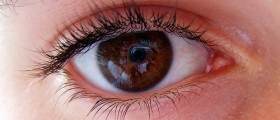
People who have been diagnosed with diabetes are aware of all the implications of that disease. Among the common problems that arise as a direct consequence of diabetes are eye problems and diabetic eye diseases.
It is very important for diabetics to take their disease very seriously and to control it through regular check-ups. It is also important to watch for early signs of eye diseases and to report them to a doctor as soon as they start.
Eye problems in people with diabetes can only be prevented by keeping the blood sugar levels at normal, by taking the appropriate therapy and by getting regular exams that should include visual acuity test, pupil dilation and tonometry, a test for measuring intraocular pressure.
Symptoms that may indicate diabetic eye disease include blurry, double or clouded vision, rinks, spots or flashing lights, floaters, pain and pressure in the eye.
Types of diabetic eye diseases
Any kind of diabetes, whether it is type 1 or 2, gestational, pediatric or adult diabetes, may lead to eye diseases. Diabetic eye disease is an umbrella term that involves glaucoma, cataract and retinopathy, among other eye problems.
In cataract, the lens of the eye becomes visibly clouded and milky, which blurs and dulls the vision. In glaucoma, the pressure builds up inside the eye and damages the optic nerve. If untreated, glaucoma can eventually lead to the loss of vision.
In diabetic retinopathy, the blood vessels in the retina are damaged and the blood leaks into the eye, clouding the vision. It is also possible for scar tissue to form due to leakage, and if it is too large, it may cause detachment of the retina from the eye.
Treatment of diabetic eye diseases
Each of the diabetic eye diseases requires specific treatment, which will be decided by the doctor.
The three basic options most doctors recommend are monitoring, photocoagulation and vitrectomy. Monitoring consists of controlling the eyes through frequent exams at the ophthalmologist’s and keeping track of the progression of the disease.
Photocoagulation is the best option for blood vessels in eyes that are actively leaking. In this procedure the vessels are cauterized with a laser to prevent leaking. Sometimes cryotherapy is used before laser cauterization.
Vitrectomy is a procedure performed in cases where leakage caused severely clouded vision. In this procedure the surgeon removes the blood-filled fluid called vitreous humor from the eye and replaces it with clear fluid. Cauterization of leaking vessels is also possible during this procedure.

















Your thoughts on this
Loading...